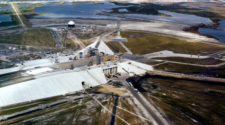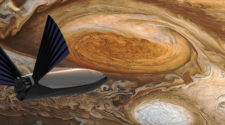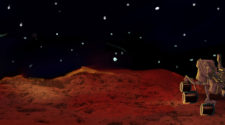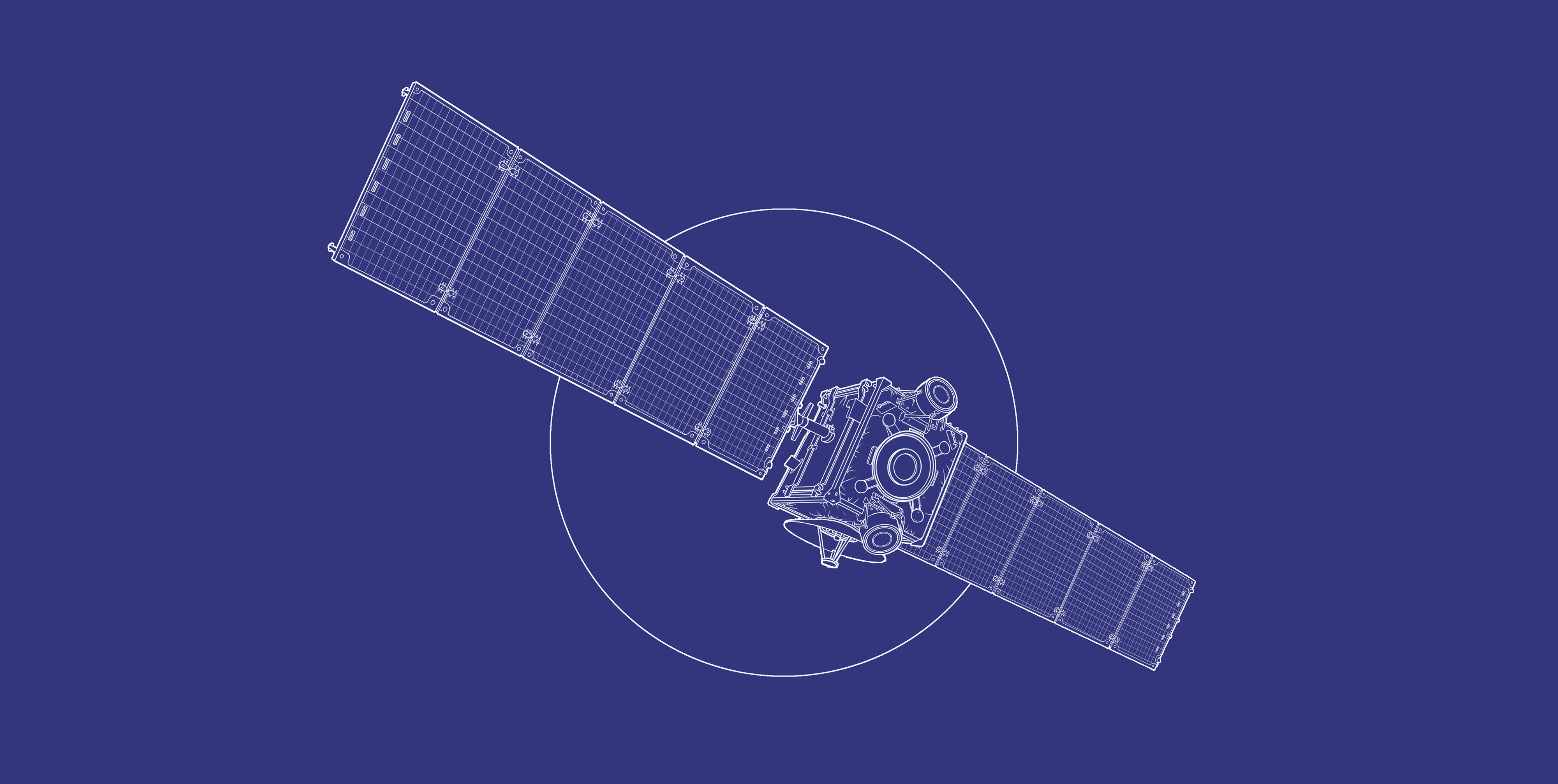
Last June, the NASA-JPL Dawn mission team received the Robert J. Collier Trophy from the U.S. National Aeronautic Association (NAA), at a presentation in Arlington, Virginia. It was presented to them ‘In recognition of the extraordinary achievements of orbiting and exploring proto-planet Vesta and dwarf planet Ceres, and advancing the nation’s technological capabilities in pioneering new frontiers in space travel.” Previous recipients of this prestigious annual award, given for the greatest achievement in aeronautics or astronautics in the USA, include Orville Wright, Chuck Yeager, the crew of Apollo 11, and NASA/JPL’s Voyager (1980) and Mars Science Laboratory/ Curiosity (2012) mission teams.
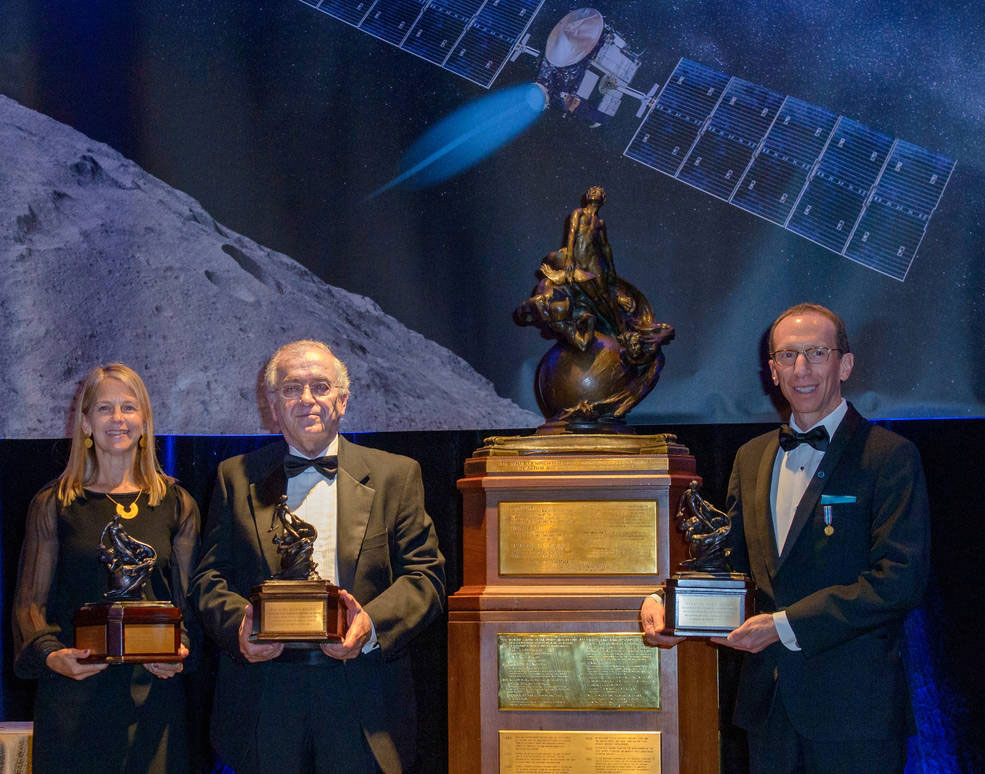
Dawn is certainly one of the most remarkable accomplishments yet in space exploration, being the only spacecraft to have visited and entered into orbit around two different bodies, thanks to its revolutionary ion-propulsion system. As Dr. Marc Rayman, Dawn Chief Engineer and Mission Director at JPL, explains in his entertaining and informative ‘Dawn Journal’, ‘Providing the merest whisper of thrust, the ion engine allows Dawn to manoeuvre in ways entirely different from conventional spacecraft.’
The technical background to the Dawn mission, its science payload and versatile ion propulsion system were discussed in Issue #10 of RocketSTEM (‘Exploring the Dawn of the Solar System’, February 2015), as were the results of the first phase of its mission at asteroid 4 Vesta. Since then, it has continued its journey on to dwarf planet Ceres, which it has been orbiting since March 2015. Here we provide a summary of what Dawn has revealed so far about this small but significant world, described by Dr. Rayman before the encounter as ‘an intriguing and mysterious orb that has beckoned for more than two centuries’ since its discovery by Giuseppe Piazzi on 1st January 1801.
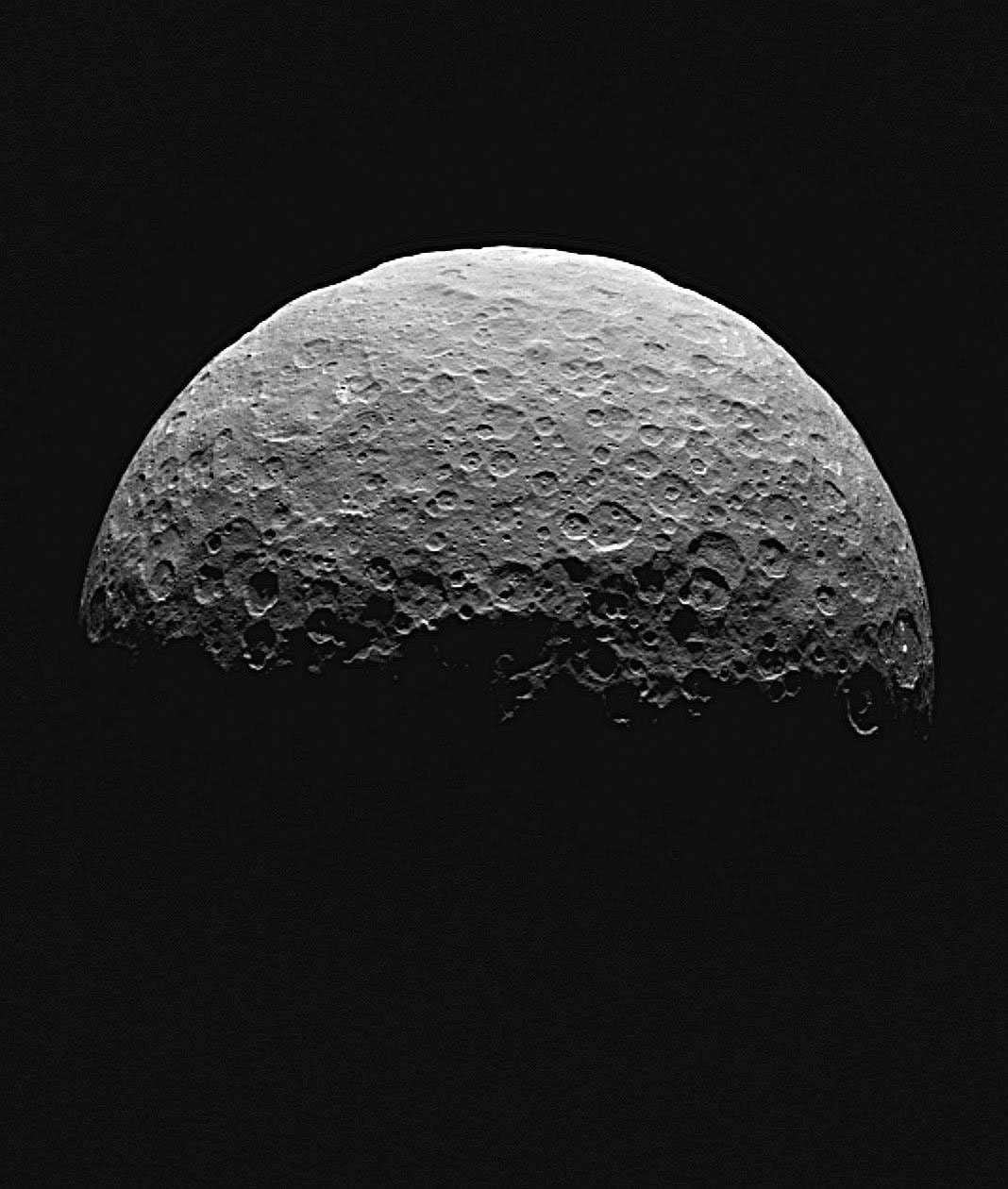
Why was Ceres a significant target?
Ceres, like Vesta, was chosen for study by the Dawn mission because it is thought to hold keys to unlocking the secrets of the Solar System’s early history. This has, indeed, proved to be the case for Dawn’s first target, Vesta, which was confirmed by the spacecraft to be one of the last remaining rocky proto-planets, a remnant building-block of the kind that formed the terrestrial planets, and the only known asteroid with an Earth-like differentiated internal structure of core, mantle, and crust.
As for Ceres, much of its attraction as a target for scientists was the fact that it is an ‘oddball’ of the asteroid belt. Thought at its discovery in 1801 to be a comet, then considered a planet, it was finally re-designated an asteroid in the 1850s when increasing numbers of small bodies were discovered orbiting the Sun between Mars and Jupiter. However, with an average diameter of 945km (587 miles) it is much larger than any other object in this region of the solar system. It is massive enough for its gravity to have pulled it into a roughly spherical shape, which led to it being reclassified once more in 2006, this time as a ‘dwarf planet’. Finally, Earth- or near-Earth-based observations of Ceres hinted at the presence of ice and clay minerals at or near its surface, and even traces of water-vapour in its proximity, indicators perhaps of a different origin to that of many asteroids and of possible geological activity at its surface.
Getting up close
Since entering into orbit around Ceres on 6th March 2015, after its two and a half year cruise from Vesta, Dawn’s science instruments have been revealing its nature in detail from a series of ever-closer orbits. Following a brief period in a ‘rotation characterisation’ orbit, Dawn spiralled inwards and took up its ‘Survey orbit’ 4,430km (2,750 miles) out on 6th June 2015, from which it made detailed global maps of the dwarf planet with its framing camera and visible and infrared mapping spectrometer (VIR).
Following a problem with one of its ion engines, which was resolved successfully, Dawn then descended to reach its High-Altitude Mapping Orbit (HAMO) at 1,480 km (920 miles) in August 2015. From this altitude, it spent a period of two months mapping Ceres at higher resolution, again with the framing camera and VIR, before spiralling slowly inwards once more to reach a Low-Altitude Mapping Orbit (LAMO) in December 2015, a mere 375km (233 miles) above the Cerean surface. From this low altitude the spacecraft’s instruments, particularly its gamma-ray and neutron detector (GRaND), were focused on trying to determine the chemical composition at and just below the surface of Ceres.
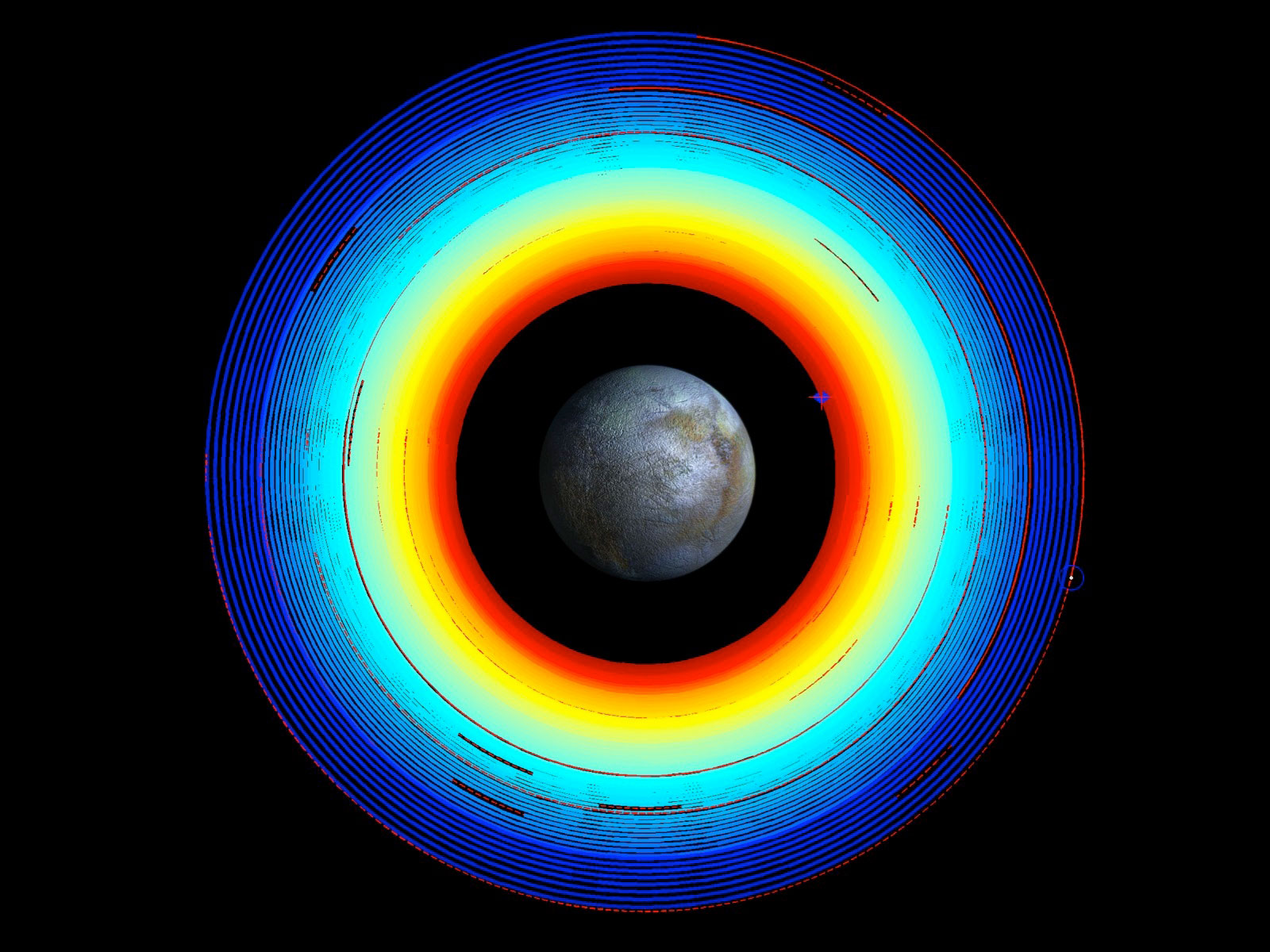
From LAMO, Dawn was also able to probe deeper down to try and discover the dwarf planet’s internal structure. By using radiometric data – that is, detecting tiny variations in the spacecraft’s orbit from Doppler shifts in the radio waves of signals transmitted back to Earth – the gravity field and, thus, internal distribution of mass in Ceres’ interior can be determined. As Marc Rayman explains ‘If, for example, there is a large region of unusually dense material, even if deep underground, the craft will speed up slightly as it travels toward it. After Dawn passes overhead, the same massive feature will slightly retard its progress, slowing it down just a little.’
By the beginning of September 2016 Dawn had completed more than eight months of ‘virtually flawless activities at this altitude, over 1,100 orbital revolutions, returning far, far more data than ever anticipated.’ For instance, of the more than 51,000 photos of Ceres taken since December 2014, over 37,000 of those have been taken in this lowest orbit at very high resolution, as little as 35m per pixel, or some 850 times better than that of the Hubble Space Telescope’s view of Ceres from the vicinity of the Earth.
Little world, big surprises!
Dawn’s instruments have confirmed Ceres’ unique status in the main asteroid belt. While its surface is heavily marked by craters of all types and ages, as well as mountains, fractures and faults, like other larger members of this region of the Solar System, the varied crater distribution across its surface ‘indicates crustal heterogeneities and a complex geologic evolution’ (H. Hiesinger et al, Science 353, aaf4759, 2016). The probe has revealed not only a world with a rich and varied history, but also one which shows evidence of recent and even continuing geological activity.
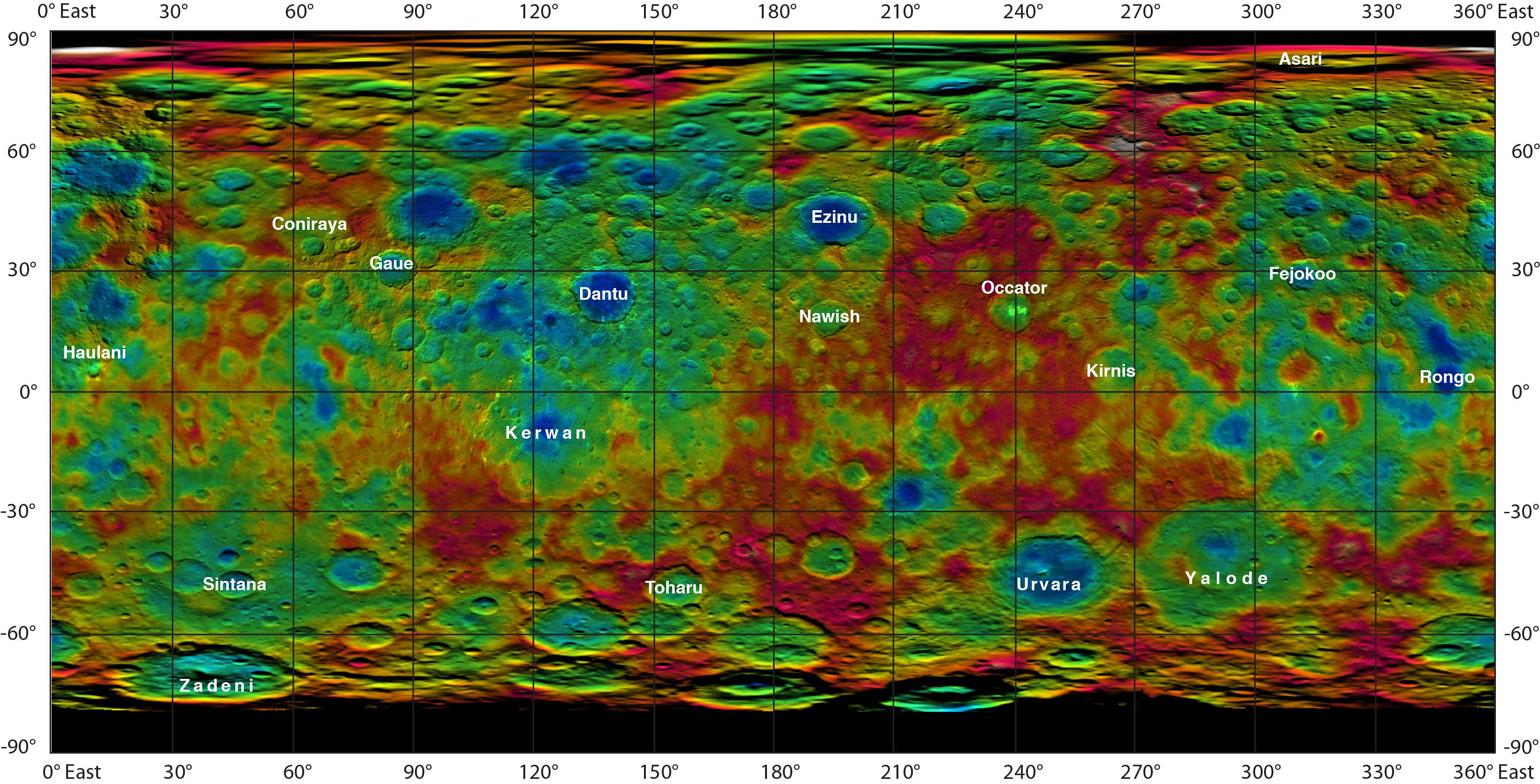
Globally, with a bulk density of only 2.161 g/cm3 , Ceres is composed of a mixture of rock and ice, as compared to Vesta, with its silicate mantle and metallic core and a higher mean density of 3.456 g/cm3 (for comparison, the Earth, with its massive iron-nickel core has a density of 5.51 g/cm3 ). Ceres appears to be differentiated into a rocky (silicate) core, overlain by a 100km thick icy mantle, with a thin, dusty outer crust.
Prior to the Dawn mission, it was believed that Ceres had a deep ice-rich layer below its rocky surface. At least a quarter of Ceres’s mass is water, a much greater proportion than seen in most asteroids. There is a lack of very large craters, which initially pointed to the idea that most large craters would have ‘relaxed’ into more shallow configurations over long geological time scales. Such ‘relaxation’ would be due to the viscosity of ice-rich sub-surface material. Since larger impactors have become scarcer over time, only the scars of later, smaller impactors would remain.
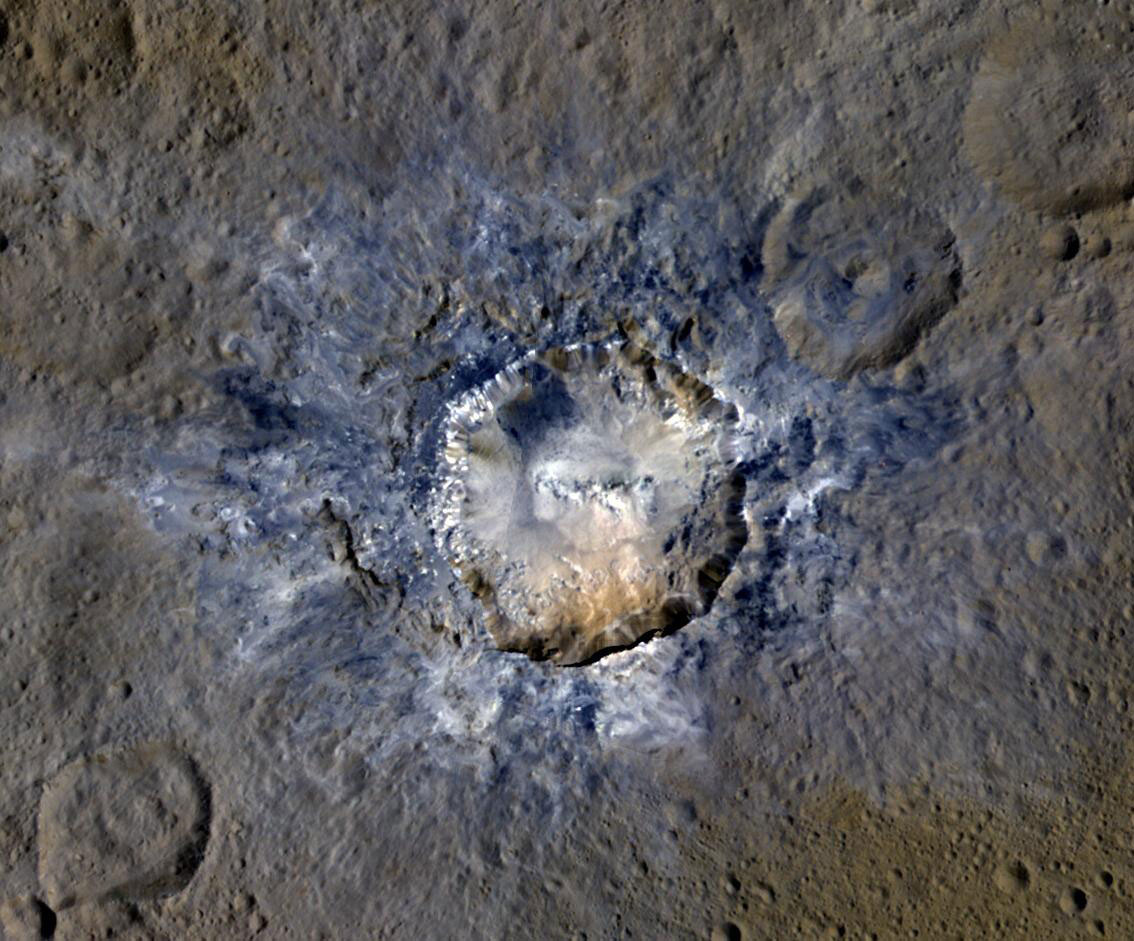
However, analysis of crater depths from Dawn images suggest that they are too deep to be consistent with the existence of an ice-rich subsurface. Viscous relaxation is only found locally in a few areas. According to mission scientists, this finding would indicate that the dwarf planet’s subsurface can only be about 30-40% ice, mixed in with rock and a lower-density material, perhaps hydrated salts and clathrates. This would be supported by the latest analyses of GRaND data, presented by the Dawn team on 15th December, indicating widespread ice just below Ceres’ surface. These studies show that Ceres’ uppermost layer – within about a metre of the surface – is rich in hydrogen, consistent with the presence of water-ice, particularly at mid-to-high latitudes, and that this is likely to be ice contained within a porous mix of rocky materials, rather than pure ice.
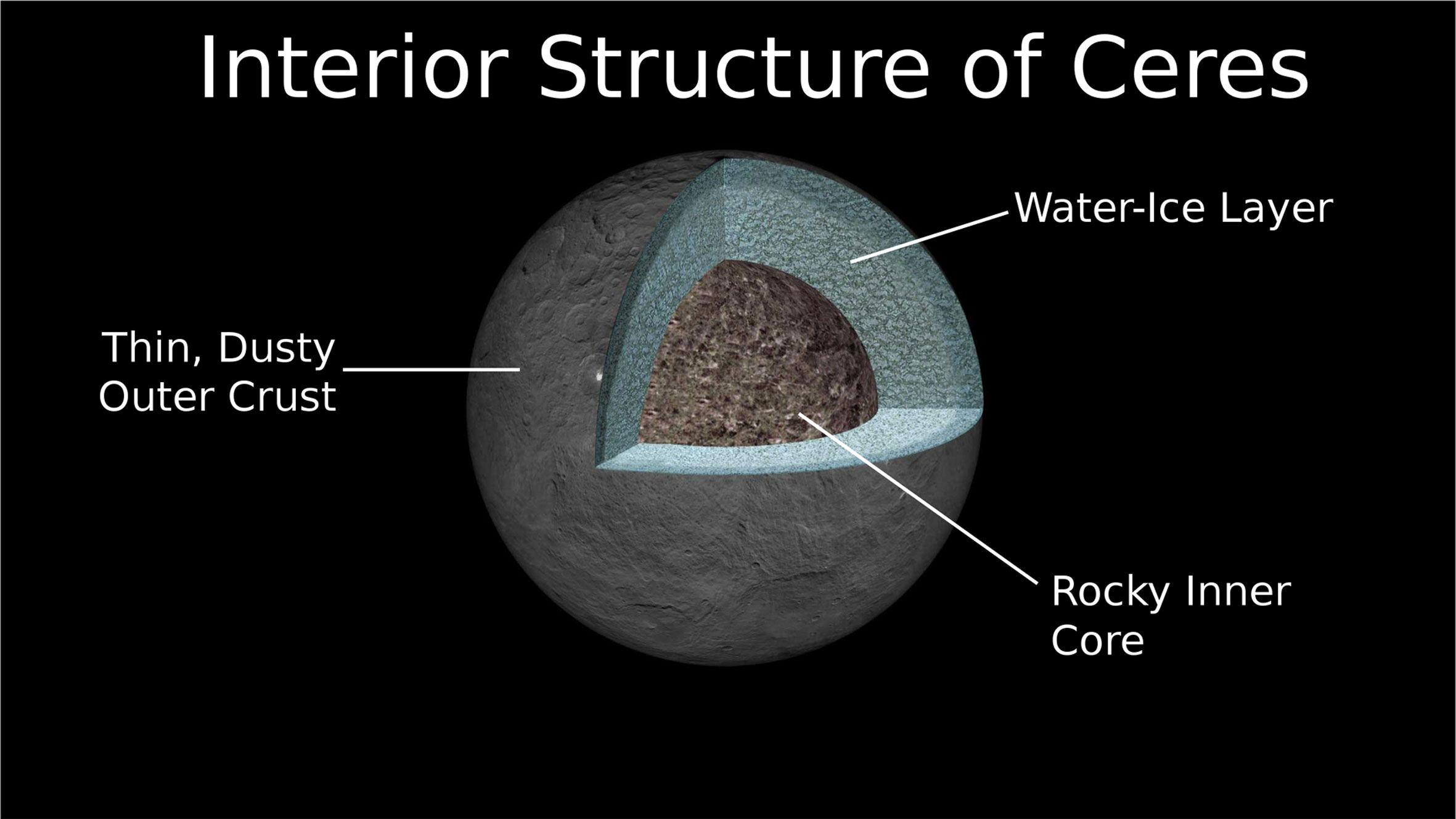
The surface of Ceres
The surface composition of Ceres is broadly similar to that of C-type, or carbonaceous, asteroids, which are common in the outer part of the main asteroid belt. Like these it has a typically dark surface, with a low albedo of just 0.09, reflecting just 9% of the light which falls upon it as compared to 12% for our Moon and 30% for the Earth. This is attributed to the presence of organic materials, some of which have been identified by Dawn. For instance, spectral observations have revealed evidence of a form of graphite called graphitized carbon on its surface.
However, Ceres’ surface shows important differences from asteroids. It is covered in hydrated materials, including phyllosilicates (clays) and localised deposits of salts such as carbonates, which indicate the presence of significant amounts of water in its interior. Some of these clays appear to be ammoniated – that is, they contain ammonia. This is a significant finding, because ammonia, a volatile substance, is scarce in the inner Solar System, but abundant further out, which has implications when trying to determine the origin of Ceres (see below ‘What is the Origin of Ceres?’).
Dark material is left behind on Ceres’ surface when ice at the surface sublimates. Ceres’ surface is relatively warm. The maximum temperature with the Sun overhead may even reach about 235 K (−38 °C). As surface water ice is unstable at such temperatures and distances of less than 5 AU from the Sun, it sublimes upon direct exposure to solar radiation. So, while there is abundant ice below the surface, any exposed surface ice should have sublimed long ago.
One of Dawn’s objectives is to try to detect and map water on the dwarf planet. Has any water or ice been found on the surface? Ice may have been exposed relatively recently by impacts or even by geological processes such as cryovolcanism or slumping. However, as yet, water has only been unambiguously identified at one surface site. This is within the small crater Oxo – named after the Candomblé (Brazilian) and Yoruba (African) god of agriculture – located almost 45 degrees north.
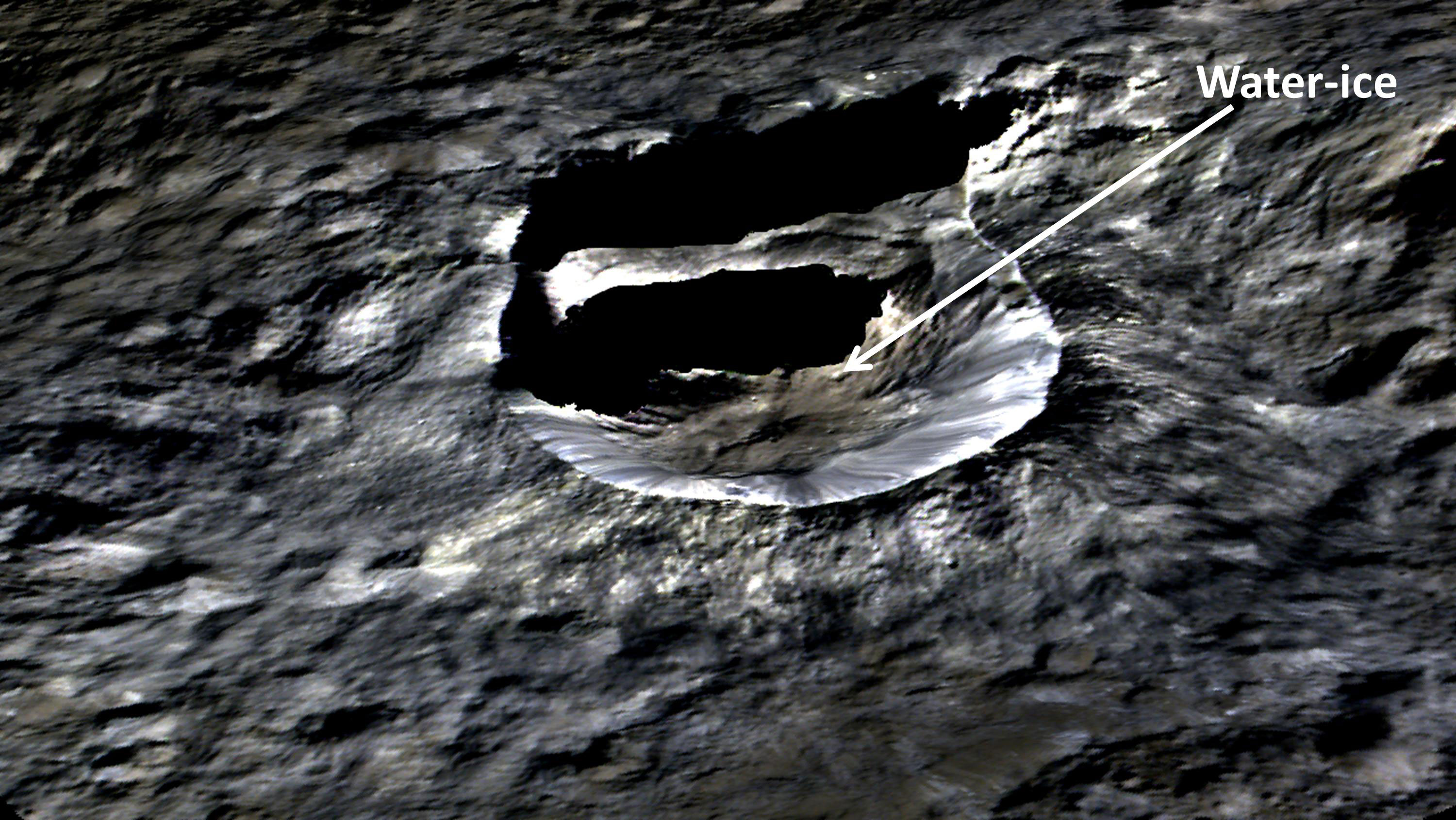
Nevertheless, water from sublimed ice may have fallen back to the cerean surface at higher latitudes, where it could be protected from sunlight within deep craters in shadowed areas which don’t receive much exposure to the Sun. ‘These “cold traps”’ says Marc Rayman ‘may harbour ice that has accumulated over thousands of years (or even longer).’ The most recent analyses of data do indicate deposits of bright material in 10 such craters on Ceres, and data from Dawn’s infrared mapping spectrometer has confirmed the presence of ice in one of these.
Bright spots and salts
Sublimation of water ice may be responsible for some of Ceres most spectacular and unexpected features – bright spots or faculae, up to 4 times brighter than the average brightness of the surface. Already observed from a distance by Dawn before its arrival, there are over 130 of these features, most of them located near impact craters. The brightest and most striking are those found in Occator, an 80-million year old (fairly recent in geological terms) crater.
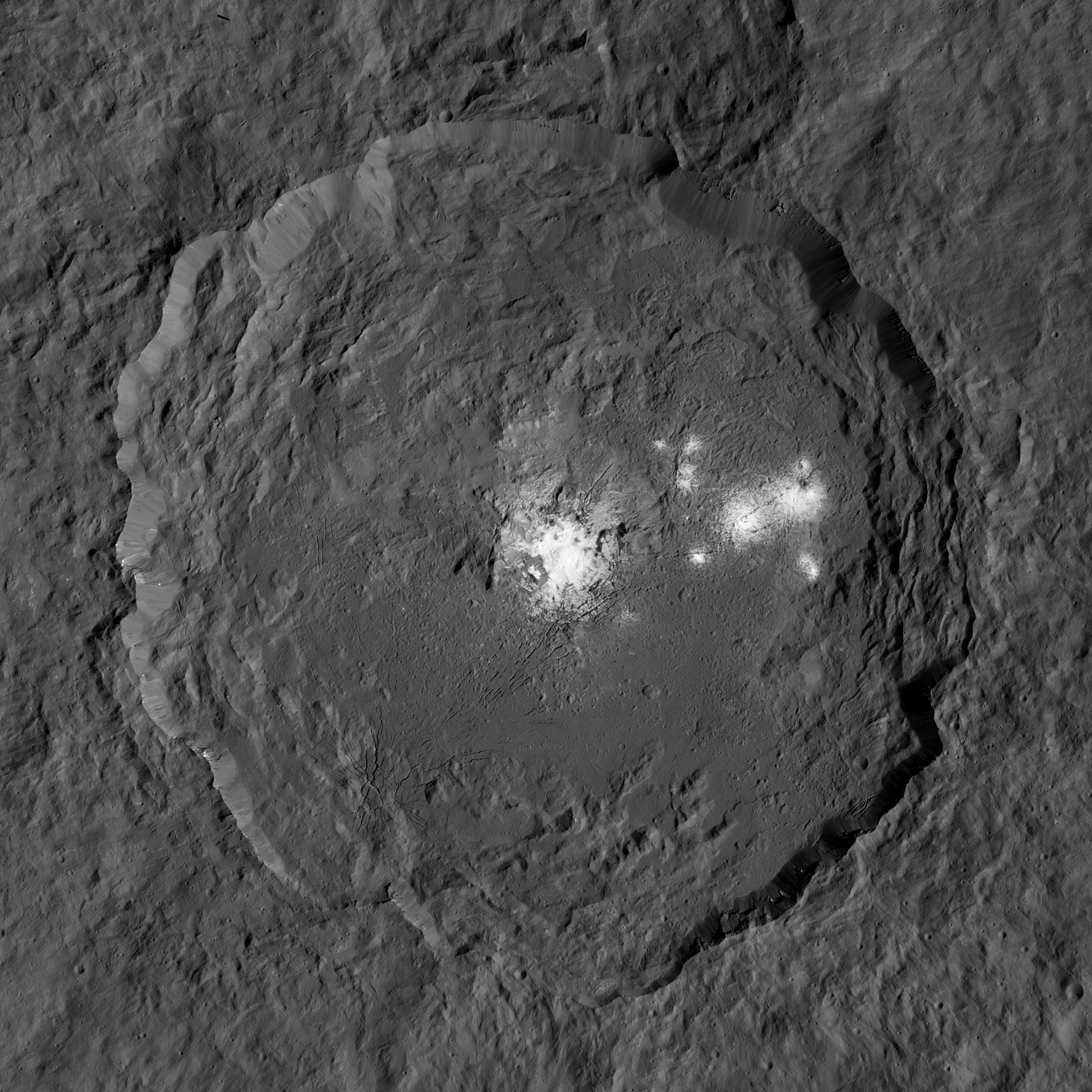
Occator’s bright spots are the most closely-studied so far. Initially thought to show signatures of the salt hydrated magnesium sulphate, more detailed analysis has now shown that the bright deposits are dominated by sodium carbonate, ‘the most concentrated known extra-terrestrial occurrence of carbonate on kilometre-wide scales in the Solar System’. This is of great significance because such salts are like those found in Earth’s hydrothermal environments. While they may have been exposed by impacts at Ceres’ surface, they are likely to have formed in its interior in a process involving liquid water, which would suggest that it has, or had, a warmer internal temperature than previously supposed.
This raises a number of intriguing questions. Could there still possibly be a remnant internal liquid water ocean beneath the layer of ice in Ceres’ interior? Or was the water present 80 million years ago when the impact occurred which created Occator? Was it the impact which created the water through melting of Ceres’ mantle, generating the heat to drive hydrothermal processes for a while. The apparent degree of internal activity detected at Pluto was a big surprise, and such activity at Ceres is equally unexpected. It is hoped that more detailed analysis of the composition of salts on the dwarf planet’s surface will be able to tell us more about conditions deep within it.
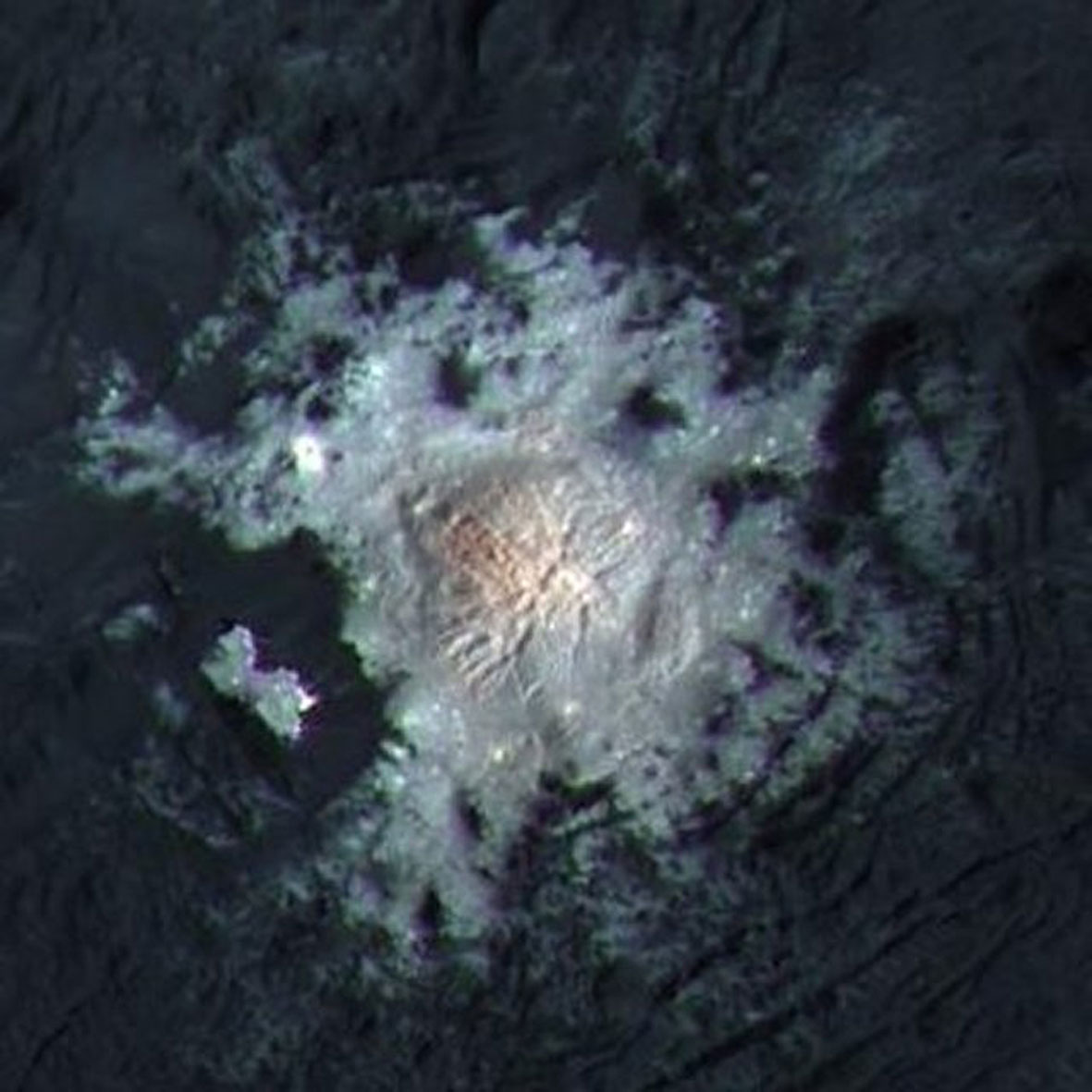
Cryovolcanism on Ceres
The presence of what appear to be recent, bright salt deposits at Ceres’ surface raises the question of question of whether hydrothermal activity may still be still active. Could it have been responsible for forcing these salts up to the surface? The fractured dome at the heart of Occator’s bright central region looks like it could well be of volcanic origin, forced upwards by material rising from the interior.
One piece of evidence which might support the idea of active replenishment of ice or water at Ceres’ surface is a haze that appears occasionally in Occator, above some of the bright spots found inside the crater. This haze reoccurs at local ‘noon-time’, when the Sun would be high in the sky, enhancing any process of sublimation. The bright spots could be creating a transient local atmosphere in this particular region of Ceres. This is the first body in asteroid belt upon which such a process has been observed directly, and would support observations from Earth, made by ESA’s Herschel Space Observatory in January 2014, of water vapour being emitted from several mid-latitude sources on Ceres. As yet, this is the only location so far where such a phenomenon has been observed, despite there being many other such spots on the dwarf planet’s surface.
Hydrothermal activity is a form of volcanism, and there is other evidence to suggest that cryovolcanism – cold volcanism involving volatiles such as water ice – has occurred on Ceres at least in recent geological time. For instance, besides the salt deposits and their associated surface fractures, a large number of craters have central pits on their floors which may be due to cryovolcanism, marking places where water may reach the surface from deep below.
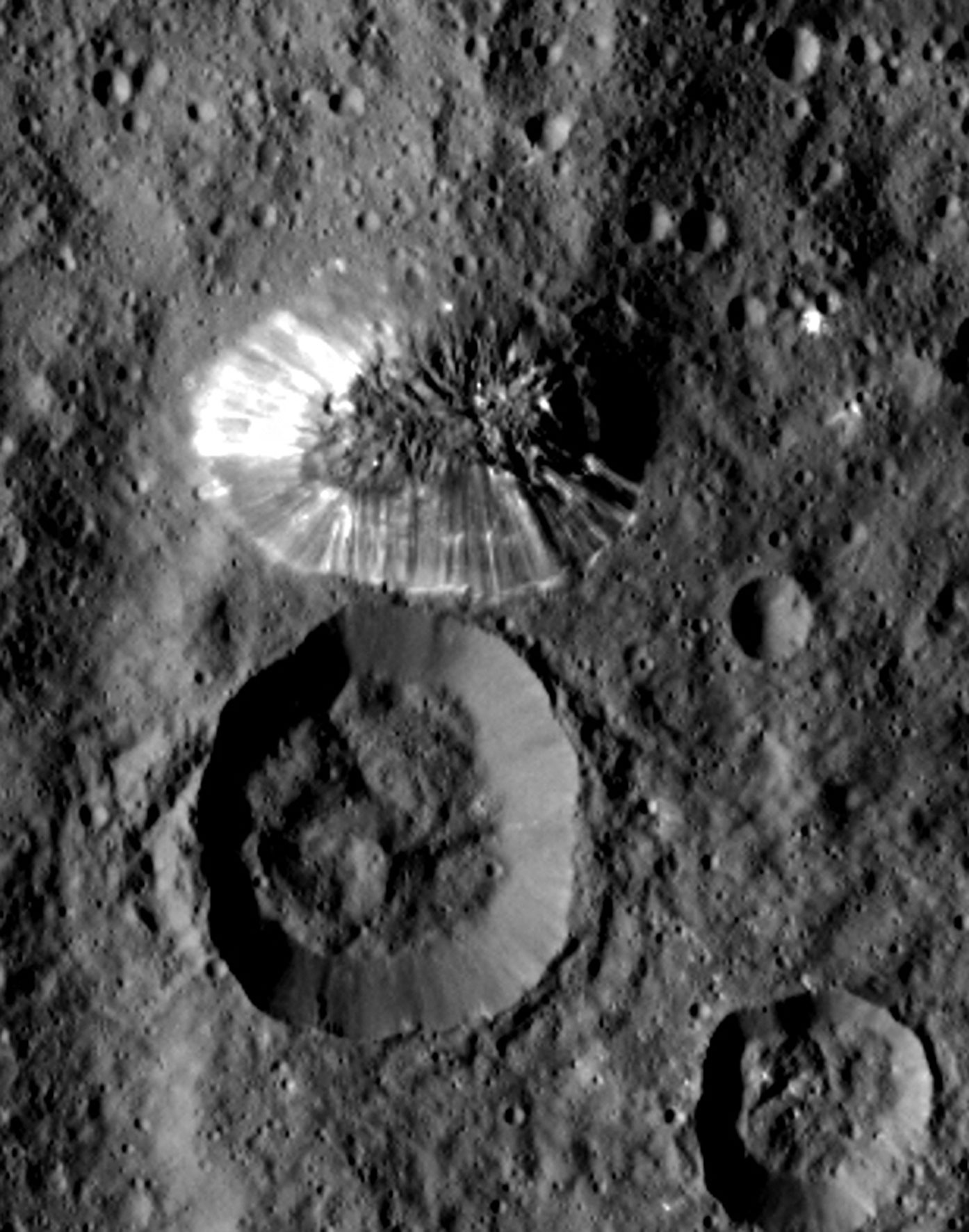
The most spectacular evidence for volcanic activity on Ceres is the discovery of a lone mountain, Ahuna Mons, which stands 5km (3 miles) above the surrounding area on its steepest side near the dwarf planet’s equator. It resembles a volcanic dome and probably formed as a ‘salty mud’ volcano. It would appear to be unique so far in the Solar system, being the first cryovolcano observed which has been produced by a mixture of brine and clays, as opposed to rock or ices. Although the volcano is not active now, Ahuna Mons’ appearance indicates that it is a surprisingly young feature geologically-speaking. It is bright, sharp, steep-sloped and unmarked by craters, and also has fine features like rock-falls still in evidence, which have not been obliterated by long-term processes like erosion by micrometeorites.
Ahuna Mons’ recent volcanism on an isolated dwarf planet is a surprise, as usually only planets, or satellites orbiting around them, have volcanism. Ceres has certainly provided us with many surprises so far and there are no doubt more to come. One of them, the discovery of ammonia-rich materials, may lead to planetary scientists having to rethink our ideas on the dwarf planet’s very origins and formation.
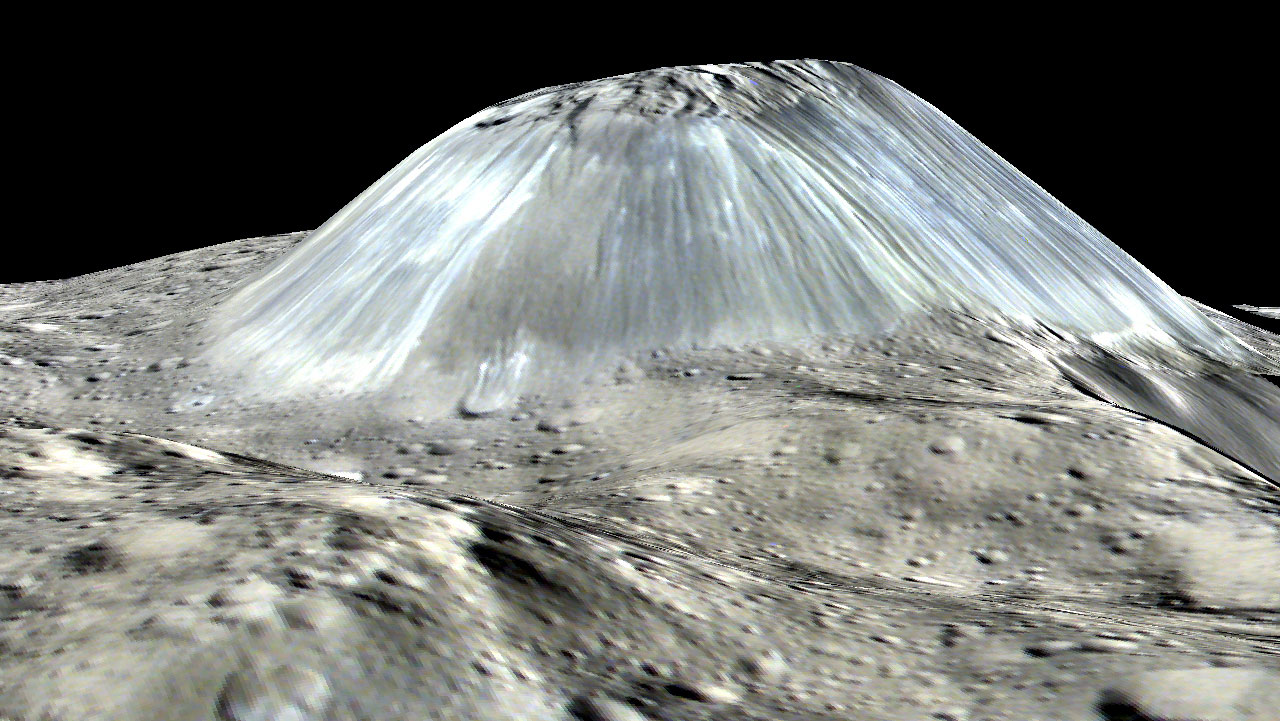
What is the origin of Ceres?
Ceres is possibly a remnant proto-planet, like Vesta a survivor from the violent planet-building processes of the early Solar System 4.57 billion years ago, if different in its composition. However, the presence of ammonia-rich clays on Ceres’ surface raises the question as to where and how exactly it originated. Ceres appears to be a transition world, neither totally rocky, nor an ice world. But, while it is close to the so-called ‘frost-line’ in the Solar System, it’s not in a cold enough region for such ammonia-bearing materials to form. So, did it form where it is, and accumulate ammonia-rich material which migrated inwards from the early outer Solar System? Or, did Ceres form in the vicinity of Neptune and then move inward when the migration of the giant planets was disrupting these outer regions some 4 billion years ago, flinging most such objects out to form the Kuiper Belt or even out of the Solar System altogether? Hopefully, further detailed studies of the dwarf planet’s composition will give us information to help understand this better.
What now for Dawn?
After greatly surpassing its objectives at both Vesta and Ceres, Dawn’s prime mission officially ended on 30th June 2016. Project officials had proposed a possible new goal for the spacecraft, another main-belt asteroid, 145 Adeona. The possibility of an extended mission to another body had been considered feasible because of sufficient remaining xenon fuel for the ion engines, and also thanks to steps taken since 2012 to conserve the spacecraft’s supply of hydrazine fuel, used for attitude control and orbital insertion. However, on 1st July NASA announced the outcome of its review of current extended planetary and lunar science missions, concluding that the Dawn should remain in orbit around the dwarf planet. One reason for this was felt to be the value of continued long-term monitoring of Ceres, especially at its approach to perihelion, the closest point in its orbit to the Sun.
While some may be disappointed by this decision, Marc Rayman’s feeling is that it was the right one. ‘It was the result of making a careful choice between two attractive options: remain in orbit around the only dwarf planet in the inner solar system, or fly by a large asteroid that has never been visited. Either would be very rewarding. I am very happy that we were able to give NASA HQ options. Most missions that are in orbit have to stay in orbit for their extended missions, and spacecraft that are not already in orbit at the end of the prime mission cannot enter orbit around something. Dawn has the best of both worlds, so to speak. NASA, supported by an independent panel of esteemed scientists, concluded that the best use of this interplanetary spaceship was to carry out further investigations of the first dwarf planet ever discovered. That is a wonderful outcome!’
And so, Dawn will continue ‘extracting secrets from dwarf planet Ceres’. Given the presence of organic materials and the possibility of pre-biotic chemistry, there is no question of allowing the probe to crash onto and contaminate this world’s surface at the end of its mission. On the 5th December Dawn completed a month of ion thrusting to reach a new orbit around Ceres. This sixth Ceres science orbit is elliptical, ranging in altitude between 7,520 km (4,670 miles) and 9,350 km (5,810 miles), to begin observing from different angles and gaining new perspectives. The probe is in good health, and its systems are functioning well. It will continue to operate during 2017, then will remain a perpetual satellite of Ceres when the mission is over, due to its highly stable orbit. We eagerly await its future observations of this intriguing world!
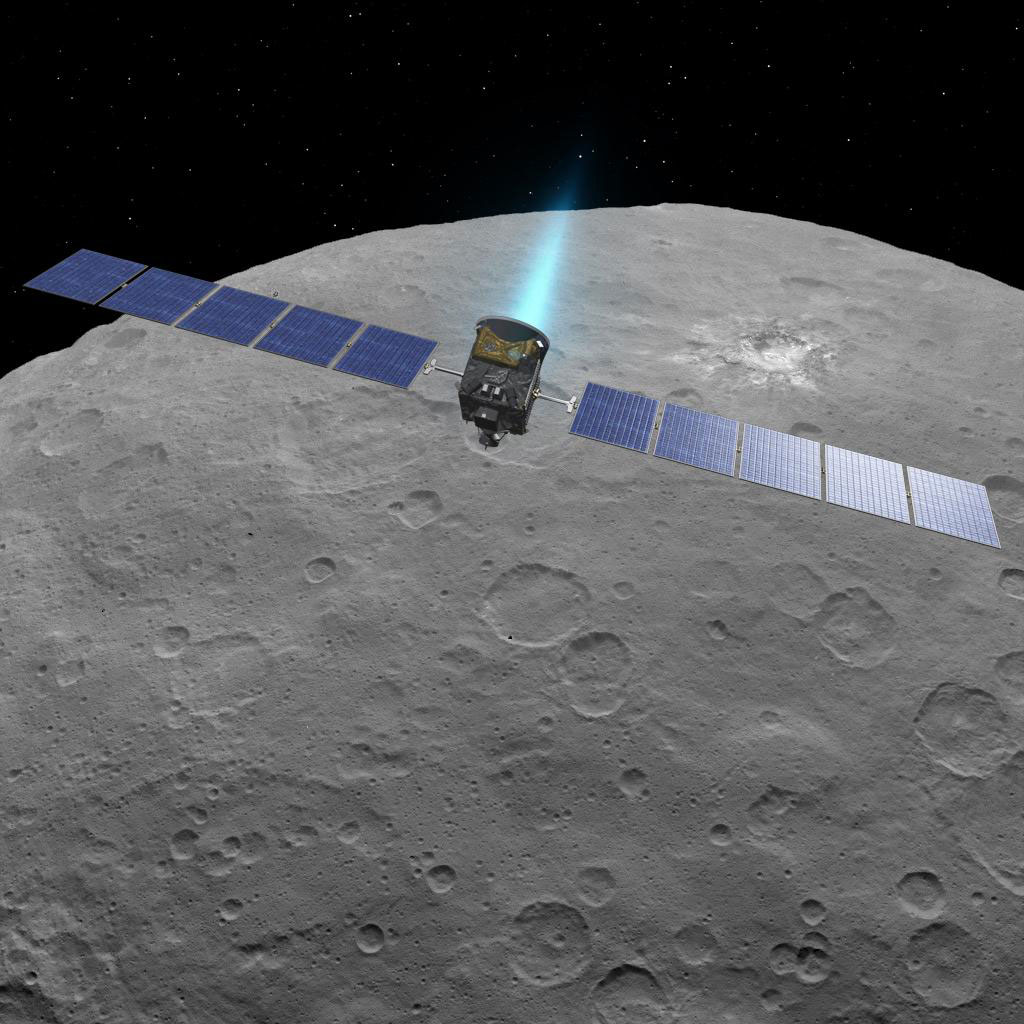
Glossary:
CLATHRATE: A compound in which molecules of one component are physically trapped within the crystal structure of another. One example is methane clathrate, or ‘fire ice’, in which a large amount of methane is trapped within a crystal structure of water, forming a solid similar to ice. Originally thought to occur only in the outer Solar System, where temperatures are low and water ice is common, significant methane clathrate deposits have been found under sediments on the bed of the Earth’s oceans. There is currently concern that ocean warming due to climate change may release methane, a greenhouse gas, from these deposits.
ORGANIC COMPOUND: Any member of a large class of gaseous, liquid, or solid chemical compounds whose molecules contain carbon.
Acknowledgements:
Thank you again to Dr. Marc Rayman for information and comments. Visit his ‘Dawn Journal’ at: http://dawn.jpl.nasa.gov/mission/journal.asp
You can see an animation, narrated by Dr. Marc Rayman, showing some of the highlights of Dawn’s exploration of Ceres so far, including Occator and Oxo craters, at http://photojournal.jpl.nasa.gov/catalog/PIA20537
Further reading:
For mission overview and news: http://dawn.jpl.nasa.gov/
For information on ion propulsion: http://www.grc.nasa.gov/www/ion/
Selected detailed science papers:
Dawn arrives at Ceres: Exploration of a small, volatile-rich world – C. T. Russell et al
Science 02 Sep 2016: Vol. 353, Issue 6303, pp. 1008-1010, DOI: 10.1126/science.aaf4219
The geomorphology of Ceres – D. L. Buczkowski et al
Science 02 Sep 2016: Vol. 353, Issue 6303, DOI: 10.1126/science.aaf4332
Distribution of phyllosilicates on the surface of Ceres – E. Ammannito et al
Science 02 Sep 2016: Vol. 353, Issue 6303, DOI: 10.1126/science.aaf4279
Cryovolcanism on Ceres – O. Ruesch et al
Science 02 Sep 2016: Vol. 353, Issue 6303, DOI: 10.1126/science.aaf4286
Cratering on Ceres: Implications for its crust and evolution – H. Hiesinger et al
Science 02 Sep 2016: Vol. 353, Issue 6303, DOI: 10.1126/science.aaf4759
Detection of local H2O exposed at the surface of Ceres – Jean-Philippe Combe et al
Science 02 Sep 2016: Vol. 353, Issue 6303, DOI: 10.1126/science.aaf3010
Bright carbonate deposits as evidence of aqueous alteration on (1) Ceres – M. C. de Sanctis et al
Nature 536, 54–57 (04 August 2016) doi:10.1038/nature18290
Composition and structure of the shallow subsurface of Ceres revealed by crater morphology – Michael T. Bland et al
Nature Geoscience 9, 538–542 (2016) doi:10.1038/ngeo2743

